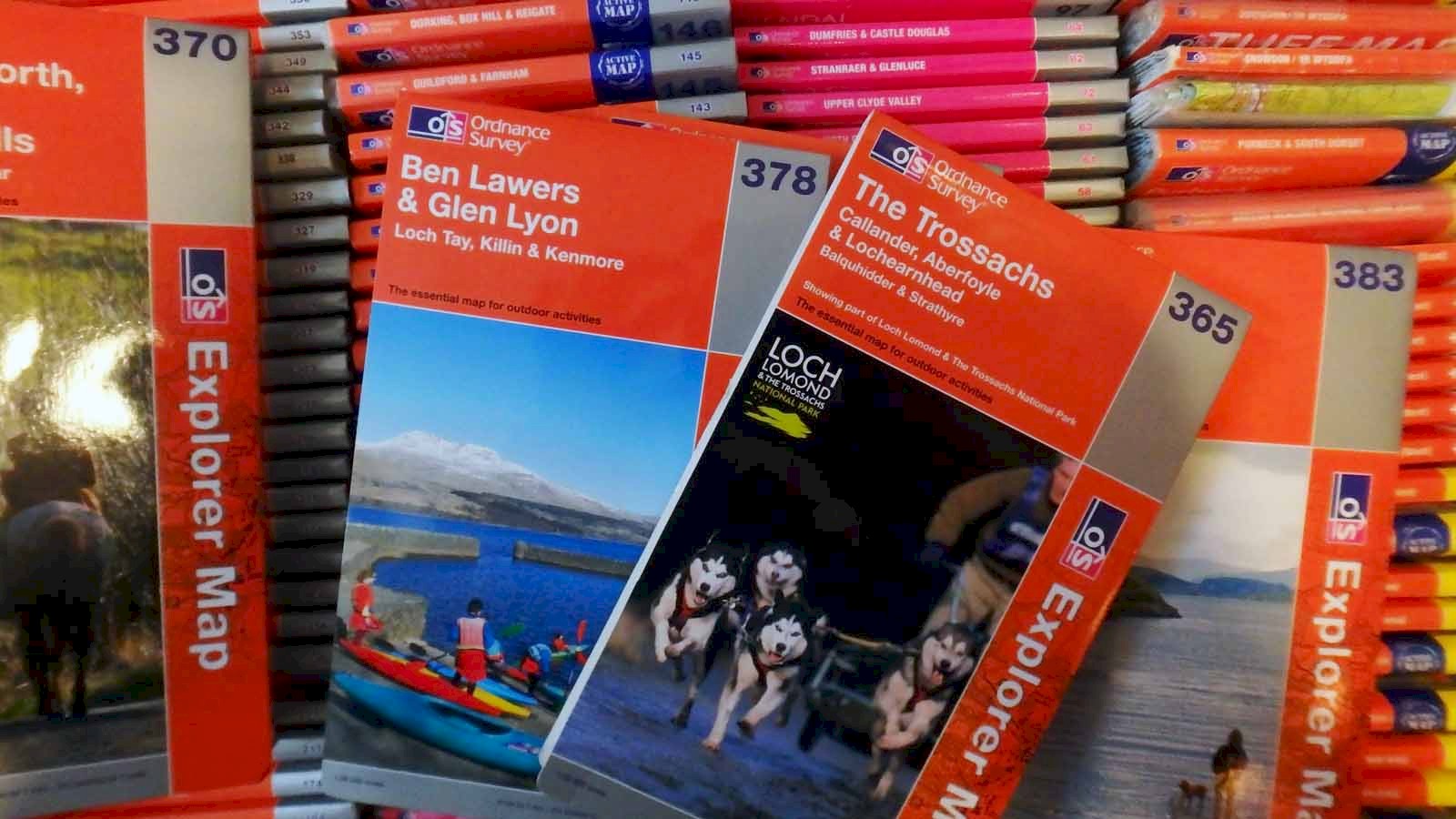Not only is this one of the most asked questions for the Ordnance Survey (OS) Customer Service team, but also one of the most frequent for me when people realise I work for the very organisation "making" the by now iconic orange and purple outdoor maps. In short, the answer can be found in the OS Leisure product catalogue which is updated regularly. Especially where maps were recently reprinted due to logo changes and overall branding changes, many users believe the maps themselves were updated at the same time when this is not the case.
To answer the base question fully I need to dive a little into the process of getting the surveyed, highly accurate, base data onto the paper maps. OS survey the country continuously throughout the year through a process of "continuous revision" and "cyclic revision". To put the scale of this operation into context, OS currently hold around half a billion individually attributed geographical features in their core geodatabase. If these were all single individual points we would be looking at a point every two square metres across the entirety of England, Wales and Scotland. Since these are mostly lines and polygons which are made up of many points each the theoretical density of surveyed points is much higher.
Continuous revision maintains and captures any significant features throughout the country. Prime examples include major building developments and new road infrastructure such as the new Queensferry crossing. This survey is carried out using aerial imagery flown by our own survey aircraft and through high accuracy (think closer to millimetres than metres here) GPS survey on the ground. Many of the changes we capture in this way are identified through our change intelligence systems which aim to notify us ahead of change taking place. These systems are also fed by customer reported errors which often require a surveyor to double check and confirm or correct. Significant changes under this programme should appear in the core data (not necessarily on paper) within 6 months of completion. At this point the change becomes available for the delivery processes of the various derived products OS publish. This includes the 1:25k and 1:50k map data.
Cyclic revision on the other hand forms a programme of systematic revision of "rural" and "mountain and moorland" areas of the country using aerial photography. Through this programme OS revise around 20% of the country every year, so each part of the country should be systematically checked for change every 5 years.
While OS now have change captured in the core database and this change is likely going to appear in the OS MasterMap Topographical dataset very soon thereafter, the data is not yet anywhere near our beloved paper maps. In order for changes to appear on these the 10km square Explorer (1:25k) tile and 20km square Landranger (1:50k) tiles need to be revised by one of OS' cartographers first. This manual and highly skilled process is based on change intelligence, recorded change in an area and time since last revision. During the revision the cartographer will view the core data OS holds and using a set of rules as well as their own cartographic experience decide which features to show, how to show them and where to show them while ensuring the resulting map is true to its intended purpose as a navigational aid.
The dates of last revision for each tile are published for Explorer and Landranger and are usually updated with each release of the data - you'll need to find the link to the "Full tile list" on this page, the direct link changes with each release. At the time of writing the oldest tiles in the Explorer series were revised on 14th September 2016 and in the Landranger series the oldest revision date shows 10th June 2002. A revision at this stage does not mean the tile has changed a lot or even that new data has been added. Changes to symbology or new features that are being captured and placed on the map will require a revision, though the overall tile may not be reviewed completely until a later date.
The map data is held in tiles, whereas the paper maps are printed in sheets. A sheet can include multiple sections of adjoining tiles.
Now the digital data has been revised we finally reach the point where the updated data can reach the paper map. In the meantime, digital services such as OS Maps and other consumers of the digital data such as Viewranger, Anquet or Memory-Map are now able to receive the new tiles from OS in their update cycles. As a result you may find areas updated in the digital sphere that are not updated for a while on the paper maps. Here, supply and demand are key to deciding whether a map sheet is updated and reprinted. Generally speaking, changes to Explorer and Landranger paper maps due to their scale, user base and intended use are not critical enough to warrant a destruction of a lot of old stock by OS, their printers, their warehouse and the individual retailers. As a result, the popularity of a map in the shops will dictate how frequently the entire sheet is updated for printing.
Sometimes you may find a map that states, "Minor revisions" on the inside of the cover. These could be one off changes where a new road has been added or a new obvious housing estate had to be shown. Minor revisions are usually referring to major change in terms of their significance, but in the grand scheme of things they change little of the map content overall.
At the time of writing this post, the earliest map revision date still in print shows January 2006 for Explorer "360 - Loch Awe & Inveraray, Dalmally, Dalavich & Furnace". Unsurprisingly a lot of the sparsely populated and less frequented areas of the Scottish Highlands show revision dates of 2007. Contrary to popular belief in the outdoor community, the paper maps are not reprinted with "the latest data OS hold" every time there is a reprint. The map sheets as we see them printed are produced specifically for the printers and therefore need to be consciously updated as opposed to being updated automatically with any update in the digital data. Change on many Explorer and Landranger sheets over time is so comparatively minor there simply is no need to update them more frequently.
Hopefully you now understand more about the OS paper map update process and the journey from real world change to paper map. The links provided in the article should be updated regularly by OS, though please let me know if any of them stop working and I'll try and find official alternatives. For any further OS related questions please contact their customer services team via the details provided on their website. This is also the route to make OS aware of any errors or omissions on the maps and stay tuned for a blog post about those shortly.


Leave a comment